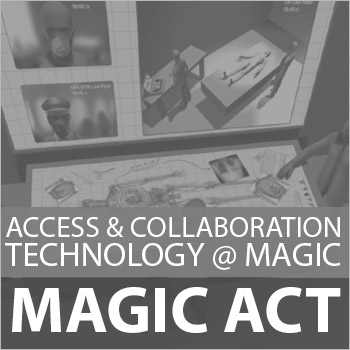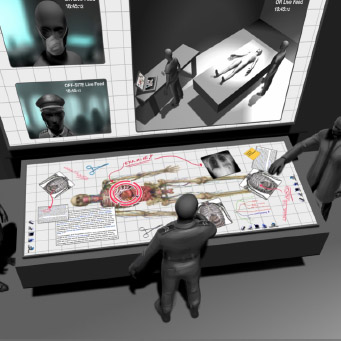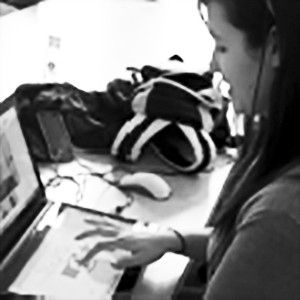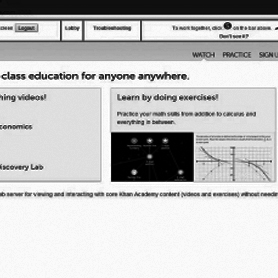Access & Collaborative Technologies @ MAGIC

Access & Collaboration Technology @ MAGIC (aka MAGIC ACT)
This is a golden age of network-facilitated collaborative innovation and social action. The MAGIC ACT initiative adapts and invents tools and technologies to amplify collective problem-solving, addresses emerging opportunities such as education and assistive technology, and explores the ramifications of such work on design, development, collaboration, and industry. The focus of this initiative is on the ways assistive and collaborative technologies bring together communities, better enable collaboration, and encourage explorations through digital means that were previously not feasible. We seek to forge new ground, implement new ideas, and document best practices.
Current areas of focus for MAGIC ACT include:
- Enhancing video conferences with real time collaborative whiteboarding
- Using collaboration technology to connect K-12 students with mentors and role models
- New interfaces for multi-user multi-touch interaction on larger touchscreens
- Online communities to design and disseminate enabling solutions like artificial hands
MAGIC ACT Projects

e-NABLE
Abstract: e-NABLE is a distributed, pay-it-forward network for design, customization, and fabrication of 3D-printed hands. Created by Jon Schull, a researcher at Rochester Institute of Technology, e-NABLE pairs children and adults with missing or deformed fingers, hands or forearms with makers who produce customized 3D printed prostheses that can improve their lives. Today, more than 300 makers, engineers, medical professionals, tinkerers, teachers, students, artists, philanthropists, parents and “ideas people” from five continents have come together to make a difference. E-NABLE does not sell the devices but instead empowers parents and others to create them on their own. They also guide new makers in the building process and will prints parts for those that need them.
Links and References:

EdgeTable: Multi-Person Multi-Location Tele-Collaboration System
Abstract: The EdgeTable is a real time telecollaboration system that combines a video wall with an interactive touch table. With this system, several teams can work in several locations as if they were working together in a single location. This augments face to face video conferencing with 1) a shared multiuser whiteboard, and the ability to import and manipulate virtual objects, 2) he ability to save and resume past sessions, and 3) a system for making annotated and signed shared agreement videos drives groups to consensus and accountability. The initial project and technology exploration was funded through a partnership with MITRE. Further work is ongoing as we continue to explore these topics and applications in simulation, healthcare, and education (to name a few).
Links and References:
- EdgeTable Initial Project Video [Vimeo]
- EdgeTable Technology Opportunity Document [PDF]
- EdgeTable.com (contains additional materials, videos, etc.)

ET-Lite and Pucks
Abstract:The goal of the ET-Lite project is to adapt lightweight software solution for multi-user multi-touch connected whiteboards based off of our understanding from the larger EdgeTable technology base. As there are now off-the-shelf solutions for multi-party hangout and internet streaming, as well as various touch-enabled devices and platforms, our research seeks to combine these elements with the customized elements that were so successful in the initial EdgeTable experience, and in particular object recognition, collaborative whiteboarding, and decision-making documentation.

Rochester Connected Coaching
Abstract:
Rochester City School District is one of the most impoverished and poorest-performing school districts in New York State, yet it is embedded within the nation's eighth best greater-metropolitan "college town". Rochester has the second highest rate of volunteerism in the country, and its universities--especially Rochester Institute of Technology--are national leaders in career learning and innovation.
By combining web-based technologies for video conferencing, online learning, and real-time connected collaboration, we have created a 'connected coaching system' designed to: 1) connect youth with couaches; 2) connect communities with communities; 3) reestablish and make obvious the links between learning and livlihoods; and 4) create paths from poverty to shared prosperity.
Links and References:
- Current Demo (requires Chrome)
- Video Demo

Hackable Heads-Up Hardware (HHHH)
Abstract: Hackable Heads-Up Hardware for the Hard of Hearing
and the Visually Impaired, and the rest of us! We're working with Vuzix and other solutions to explore the way wearables can be better used as access technologies.
Links and References:




